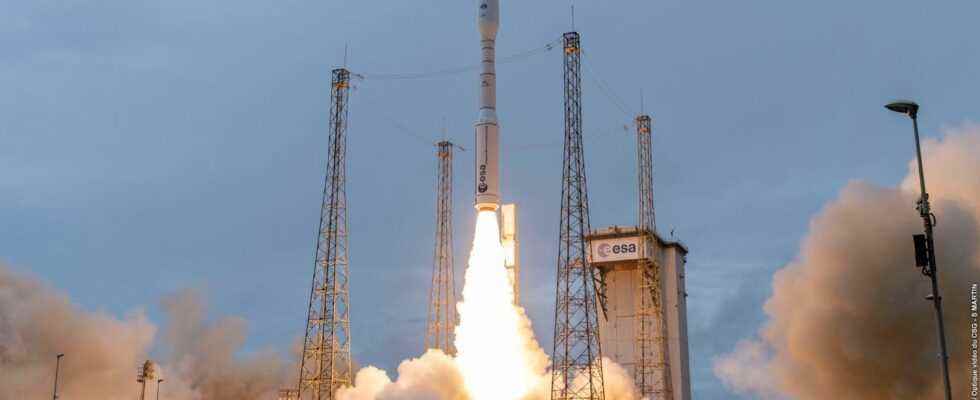At Guiana Space Center, July 13 looked like a party. After a tense morning and the twice-delayed take-off of the new Vega-C launcher, its first mission ended in success. A launch full of promise for a sector still in crisis.
If reliability is there, customers will come…
A bit of suspense…
Vega-C still had a few surprises in store, even in the final minutes of the countdown. With its development complicated and delayed by the health crisis, this inaugural take-off put a lot of pressure on the shoulders of the teams from Avio (the prime contractor), ESA (which financed the project), CNES (responsible ground infrastructure) and the Italian agency ASI which provided the main payload, the small LARES-2 satellite.
Moreover, the launch on July 13 at 1:13 p.m. (Paris) did not take place. Twice, the chronology was stopped a few seconds before takeoff. Nothing unusual, moreover for a first time: Vega-C bears the same name as the previous generation, but many things have changed. Patience, therefore…
And, at 3.13 p.m. (Paris), the take-off signal sounded in the control room. Then, Vega-C leapt into the gray sky, faster than the vast majority of launch vehicles in the world, thanks to its high-powered solid propellant, the P120C.
A complex mission to the end
With a long preparation, the Europeans had put all the chances on their side, but the inaugural mission was not easy. Indeed, the first three stages were to allow the AVUM+ upper stage to be sent on a very precise trajectory close to low orbit, before the latter fired up its engine 5 times in more than two hours of maneuvers.
Orientation of the rocket at an altitude of more than 5,000 kilometers, passages in “white zones” far from terrestrial antennas, reconnections, ejection of different satellites at various times: so many difficult points but managed brilliantly thanks to past experience . Finally, in an atmosphere worthy of a (small) stadium, the spectators were able to celebrate the success of this first new pitcher in 10 years. LARES-2 as well as 6 CubeSat format satellites were ejected as planned.
And now, we pass the second!
We had to celebrate this launch also because after many delays, the teams will have a lot to do after a short vacation. Vega-C’s second mission is already eagerly awaited with two Airbus Defense & Space satellites, Pléiades NEO 5 and 6, which will take place under the fairing by the end of the summer.
Arianespace claims to have 7 firm contracts for Vega-C, and its capacities as well as the unavailability of Soyuz will make it a popular solution… if, at least, it can follow the ramp-up with reliability. One thing is certain, nothing better than starting with a success!
Source :ESA

7